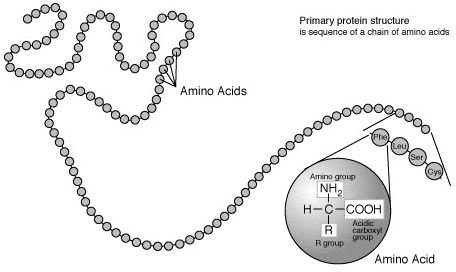What is the Definition of an Organic Molecule and What Are the Four Main Types?
What is the Definition of an Organic Molecule?
An organic molecule is found in living systems. They are typically composed of carbon atoms in long chains or rings that are attached to other atoms. These other atoms often include elements such as oxygen, hydrogen, and nitrogen. Organic molecules are composed of two or more elements and are produced by or found in living organisms. They contain carbon-hydrogen bonds. There are four main types of organic molecules including proteins, nucleic acids, carbohydrates, and lipids.
Carbohydrates
Carbohydrates are composed of carbon hydrates. The ratio is one water molecule to one carbon molecule (CH2O)n. There are several different types of carbohydrates including monosaccharides, disaccharides, and polysaccharides.
Monosaccharides consist of one molecule (single sugars) and are the simplest. Disaccharides consist of double sugars and are created from two monosaccharides. Polysaccharides are polymers that are composed of several sugars. They can be a mixture of monomers (several of the same monosaccharide) or they can be the same monomer.
Proteins
Proteins are polymers that are made up of monomers known as amino acids. Each amino acid includes an acidic carboxyl group, a base amino group, and a hydrogen atom. These are all affixed to the same carbon atom. There is a fourth bond that affixes the alpha carbon to a side group that changes between different amino acids. These side groups affect how the amino acids in a protein interact with one another, and how protein interacts and communicates with other molecules. Most organisms will only use 21 different amino acids to build proteins.
Peptide bonds are the types of covalent bonds that create amino acid chains by linking the amino acids together. A dipeptide refers to two amino acids that are linked together, and a polypeptide refers to three or more amino acids linked together.
Lipids
This type of molecule is not attracted to water (also referred to as hydrophobic), due to the non-polar covalent bonds that link hydrogen and carbon not being attracted to water’s polar bonds. There are four main lipid groups. These include fats, waxes, phospholipids, and steroids.
Fats, as well as oils, are created when two kinds of molecules are combined. These include a type of alcohol known as glycerol and triglycerides (three fatty acids).
Phospholipids are soluble in oil and water. They include hydrocarbon tails that do not like water, and phosphate groups on the end that do like water. Human cell membranes are mostly made up of phospholipids that are classified in a double layer, with both layers’ heads facing outward and tails facing inward.
Waxes are hard to break down and are insoluble in water. They are esters of alcohol. Wax creates a waterproof and protective layer on some bacteria, integuments of insects, plants, and animal fur.
Steroids are a cholesterol molecule’s central core and it contains four fused rings. Cholesterol is an essential precursor for vitamin D and the sex hormones.
Nucleic Acids
Nucleic acids are composed of nucleotide monomers and are polymers. Each nucleotide consists of at least one phosphate group, a pentose sugar, and one of the five cyclic nitrogenous bases.
So, now that you have learned the answer to, “What is the definition of an organic molecule?” and have learned of the four main types of them, you have got the basics of organic chemistry covered!
Resources
Science Professor Online. (2010). Introduction to Carbohydrates, Lipids, Proteins, and Nucleic Acids. Retrieved on March 5, 2010 from Science Professor Online: https://www.scienceprofonline.org/
Image Credits
Primary Structure of a Protein: National Human Genome Research Institute – Wikimedia Commons
